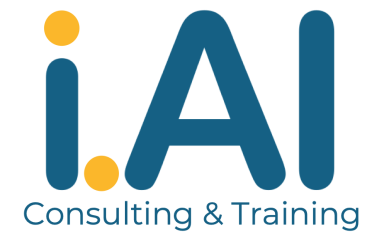PROMPTING STRATEGIES
ZERO-SHOT PROMPTING
Zero-shot prompting is an innovative and efficient strategy for
situations where task-specific training data is unavailable.
By leveraging the model's ability to generalize across various tasks without examples, it is suitable for numerous applications, such as text generation, classification, and summarization.
Overview
In zero-shot prompting, the model is expected to complete a task without being provided with explicit examples. This strategy leverages the existing knowledge of large language models (LLMs), which have been trained on vast datasets, allowing them to learn comprehensive patterns and linguistic structures.
The term “zero-shot” comes from the concept that the model makes predictions or completes tasks without having seen specific task-related examples, relying solely on its general understanding of language and context.
The main strength of zero-shot prompting lies in its ability to generalize across a wide range of tasks, even without direct task-specific training. It is particularly valuable for tasks where relevant (labeled) examples are unavailable or when tackling new challenges without model fine-tuning.

Method
In zero-shot prompting, the model receives an instruction or question and generates output based on its inherent knowledge from pre-training.
Unlike one-shot or few-shot prompting, it does not rely on examples within the prompt. Instead, the model is given a clearly formulated instruction, request, or task description to guide its behavior.
The prompt typically includes a task description, sometimes with keywords to specify the expected format or type of response.
The model interprets this prompt by drawing on the extensive knowledge gained from large-scale unsupervised pre-training. This includes understanding relationships between words, tasks, and various output types, even if the model has never encountered the specific task during training.
Examples
Example 1: Text Classification (Sentiment Analysis)
- Prompt: "Classify the sentiment of the following text as positive, negative, or neutral: 'The product quality is amazing, and I am truly satisfied.'"
- Expected Answer: "Positive."
Here, the model receives no examples for sentiment classification, but based on its language understanding, it can infer that the statement expresses positive sentiment.
Example 2: Translation
- Prompt: "Translate the following sentence into French: 'I am learning natural language processing.'"
- Expected Answer: "J'apprends le traitement du langage naturel."
In this case, the model performs the translation without any translation examples in the prompt.'
Example 3: Summarization
- Prompt: "Summarize the following paragraph: 'Artificial intelligence has enabled significant breakthroughs in healthcare, from early disease detection to personalized treatments. These advances save lives and improve the quality of care globally.'"
- Expected Answer: "AI improves healthcare through early detection and personalized treatments."
The model can condense the paragraph based on its pre-trained understanding of summarization.

Practical Applications
Zero-shot prompting is highly versatile and can be used in numerous applications, including:
- Text Classification:
For tasks like sentiment analysis, topic categorization, and spam detection, this method allows models to categorize texts based on general instructions without needing explicit examples.
- Translation:
It can be used for translating between languages, even for language pairs or scenarios for which the model was not specifically trained.
- Text Summarization:
The model can summarize articles, research papers, or any text by interpreting the instruction without prior examples.
- Question Answering:
It can respond to factual or open-ended questions, using its extensive knowledge to answer historical queries or explain technical terms.
- Information Retrieval:
For extracting relevant information from texts, the model can be instructed to identify key points or specific details.
- Text Generation:
Zero-shot prompts can create creative or informative texts based on an instruction alone, such as writing a poem, story, or technical explanation.
For example, in healthcare, zero-shot prompting could be used to answer medical queries or summarize patient histories. In customer service, it could provide automated responses to inquiries without requiring specific training examples.

Strengths
- Broad Generalization:
Since the model is trained on diverse data sources, it can generalize well across a wide range of tasks, from translation to summarization and question answering.
- Efficiency:
By eliminating the need for task-specific datasets, this strategy reduces the costs and time associated with data collection, annotation, and model fine-tuning.
- Task Flexibility:
It allows the model to handle various tasks without requiring task-specific retraining, making it highly adaptable in dynamic environments.
- Quick Deployment:
This method enables rapid deployment of an AI model for new tasks, as it can be guided by prompts instead of undergoing time-consuming retraining processes.
- Suitability for Specialized Tasks:
The strategy is ideal for niche markets, novel tasks, or emerging trends where there are not yet abundant task-specific examples.
Challenges & Limitations
- Accuracy and Reliability:
Although zero-shot prompting can be effective, it is often less accurate than models fine-tuned with task-specific data. The model may generate plausible but incorrect or irrelevant answers.
- Ambiguity in Instructions:
The model's performance heavily depends on the clarity and precision of the prompt. Unclear or ambiguous prompts can lead to suboptimal or incorrect results. Crafting effective prompts often requires trial and error.
- Inconsistent Performance Across Tasks:
While it works well for some tasks, zero-shot prompting struggles with complex, specialized, or domain-specific tasks requiring deep understanding or technical knowledge, such as solving mathematical problems or legal analysis.
- Sensitivity to Prompt Design:
The model’s output can be highly sensitive to the wording or structure of the prompt. Small changes in phrasing can lead to significant variations in output quality.
- Contextual Limitations:
It’s assumed that the model fully understands the task context based on a general instruction. However, it may miss nuances without examples or context-specific fine-tuning.
- Bias and Generalization Issues:
LLMs are trained on extensive and varied datasets, which can introduce biases based on the original material. Without corrective examples, zero-shot prompting can amplify these biases and result in inappropriate responses.

©Urheberrecht. Alle Rechte vorbehalten. Datenschutz. Impressum.
Wir benötigen Ihre Zustimmung zum Laden der Übersetzungen
Wir nutzen einen Drittanbieter-Service, um den Inhalt der Website zu übersetzen, der möglicherweise Daten über Ihre Aktivitäten sammelt. Bitte überprüfen Sie die Details in der Datenschutzerklärung und akzeptieren Sie den Dienst, um die Übersetzungen zu sehen.


